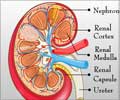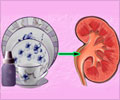A new study points out that patients living in high altitude area have 12 to 15 percent lower death rate than those living in lower altitude.
The researchers have found that patients with end-stage renal (kidney) disease (ESRD) living at higher altitude are likely to live longer than their counterparts residing at the sea level.The patients residing at higher altitude achieve greater hemoglobin concentrations (a protein in red blood cells that primarily transports oxygen from the lungs to the rest of the body) while receiving lower doses of erythropoietin (a hormone that stimulates the production of red blood cells).
They said that increased iron availability caused by activation of hypoxia-induced (oxygen deficiency) factors at higher altitude may explain this finding.
The team led by Wolfgang C. Winkelmayer, M.D., Sc.D., of Brigham and Women's Hospital and Harvard Medical School, Boston, examined whether increased altitude would be associated with a reduced rate of death for patients initiating chronic dialysis.
Using a comprehensive dialysis registry, the researchers identified 804,812 patients with ESRD who initiated dialysis between 1995 and 2004 and who met the study entry requirements.
Most patients resided below an altitude of 250 ft. or between 250-1,999 ft.nly 1.9 percent of incident dialysis patients lived between 4,000 and 5,999 ft. and 0.4 percent higher than 6,000 ft.
Advertisement
"In conclusion, we found a graded reduction in mortality from any cause in ESRD patients residing at greater altitude, a finding that was not explained by differences in observed patient characteristics," wrote the authors.
Advertisement
Source-ANI
Aruna/L









